Getting Started with SQuADDS#

This guide helps you get started with SQuADDS
Installation#
SQuADDS is built on top of qiskit-metal, which is a crucial dependency. The installation process depends on whether you already have qiskit-metal installed in your environment or not.
For detailed installation instructions and troubleshooting for qiskit-metal, please refer to:
- Qiskit Metal Installation Guide
- Qiskit Metal Installation PDF Guide
- Qiskit Metal Installation Video Tutorial 1
- Qiskit Metal Installation Video Tutorial 2
1. Installing SQuADDS with Existing qiskit-metal#
If you already have qiskit-metal installed and running in your environment, you can install SQuADDS in two ways:
Using pip:
pip install SQuADDS
From source:
git clone https://github.com/LFL-Lab/SQuADDS.git
cd SQuADDS
pip install -e .
2. Installing SQuADDS on a Fresh Environment#
If you don’t have qiskit-metal installed, you’ll need to set up a new environment first. We provide a shell script that:
Creates a new conda environment with Python 3.10
Installs
qiskit-metaland its dependenciesSets up the environment for
SQuADDS
Run the following script:
#!/bin/bash
# Ensure script fails if any command fails
set -e
# Step 1: Download environment.yml from Qiskit-Metal repository
echo "Downloading environment.yml..."
curl -O https://raw.githubusercontent.com/Qiskit/qiskit-metal/main/environment.yml
# Step 2: Set up Miniconda environment
echo "Setting up Conda environment..."
conda env create -n <env_name> -f environment.yml
echo "Conda environment created."
# Activate the Conda environment
source "$(conda info --base)/etc/profile.d/conda.sh"
conda activate <env_name>
# Step 3: Install Qiskit-Metal
echo "Installing Qiskit-Metal..."
python -m pip install --no-deps -e git+https://github.com/Qiskit/qiskit-metal.git#egg=qiskit-metal
After running this script, you’ll have a working qiskit-metal environment. You can then follow the instructions in installing-squadds-with-existing-qiskit-metal to install SQuADDS.
Installing SQuADDS on Apple Silicon#
qiskit-metal currently lacks full native support for Apple Silicon due to PySide compatibility issues. However, you can run SQuADDS on Apple Silicon by emulating the x86 architecture with Rosetta 2.
First, ensure Rosetta 2 is installed:
softwareupdate --install-rosetta
Then, create a new conda environment configured to emulate x86:
# Create environment with x86 emulation
CONDA_SUBDIR=osx-64 conda create -n <env_name> python=3.10
conda activate <env_name>
conda config --env --set subdir osx-64
This environment will now use Rosetta 2 to run x86 applications. You can then follow the same principles as in installing-squadds-on-a-fresh-environment to set up qiskit-metal in this environment.
#!/bin/bash
# Ensure script fails if any command fails
set -e
# Step 1: Download environment.yml from Qiskit-Metal repository
echo "Downloading environment.yml..."
curl -O https://raw.githubusercontent.com/Qiskit/qiskit-metal/main/environment.yml
# Step 2: Update the existing conda environment
echo "Updating Conda environment..."
conda env update -n <env_name> -f environment.yml
echo "Conda environment updated."
# Activate the Conda environment
source "$(conda info --base)/etc/profile.d/conda.sh"
conda activate <env_name>
# Step 3: Install Qiskit-Metal
echo "Installing Qiskit-Metal..."
python -m pip install --no-deps -e git+https://github.com/Qiskit/qiskit-metal.git#egg=qiskit-metal
Now, for installing SQuADDS, follow the same principles as in installing-squadds-with-existing-qiskit-metal.
Note
The CONDA_SUBDIR=osx-64 flag tells conda to use x86 packages instead of arm64 packages, and conda config –env –set subdir osx-64 ensures this setting persists for the environment.
Installing Additional Dependencies#
SQDMetal and palace are optional dependencies that can be used with SQuADDS for additional simulation capabilities.
Installing SQDMetal#
Once you have SQuADDS and qiskit-metal installed, you can install SQDMetal by:
git clone https://github.com/sqdlab/SQDMetal.git
cd SQDMetal
pip install .
Installing palace#
palace is a powerful open source electromagnetic simulation tool that can be used with SQuADDS. For detailed installation instructions, please refer to our Palace Installation Guide.
Questions?
Please reach out to shanto@usc.edu if you face any installation issues.
FAQs#
We have compiled answers to common questions and issues. If you can’t find what you’re looking for, feel free to reach out.
Installation Issues#
Q: Getting ModuleNotFoundError: No module named 'squadds' after running pip install SQuADDS in Jupyter Notebook. How can I fix this?
A: You may need to restart the kernel after installing SQuADDS. To do this, go to the Kernel menu in Jupyter Notebook and select Restart.
Q: Getting ERROR: Failed building wheel for klayout while building from GitHub in Windows
A: This problem can be solved simply by installing KLayout independently from the website here, and commenting out the klayout==0.29.0 in the requirements.txt file.
The requirements.txt file can found in the cloned repository. Then re-run the commands.
Accessing the Database#
Q: I am getting the error Generating train split: 0 examples [00:00, ? examples/s] An error occurred while loading the dataset: An error occurred while generating the dataset for various SQuADDS_DB() methods (e.g. SQuADDS_DB().create_system_df() ).
A: This is an error we have seen only happening on Windows systems for datasets library version 2.20.0. Downgrading to any versions between 2.17.0 and 2.19.2 should fix the issue. To downgrade, run the following command:
pip install datasets==2.19.2
Q: I am getting the error KeyError: "Column contributor not in the dataset. Current columns in the dataset: ['image', 'measured_results', 'contrib_info', 'design_code', 'notes', 'sim_results', 'paper_link']" for various SQuADDS_DB() methods (e.g. SQuADDS_DB().view_all_contributors() ). Everything was working fine just the other day.
A: This error is due to new datasets (configs) added to SQuADDS/SQuADDS_DB dataset on 07/04/2024 (🇺🇸 🦅 🎆). To fix this issue please upgrade squadds to its latest version (or any version greater than or equal to 0.2.35).
Q: If there are errors upon instantiating the SQuADDS_DB class, what should I do?
A: If you encounter errors upon instantiating the SQuADDS_DB class, chances are there is an issue with caching. To fix this, please delete the SQuADDS dataset from the huggingface cache directory on your local machine. The cache directory is typically located at ~/.cache/huggingface/datasets/.
.env File#
Q: Why is the .env file needed?
A: The .env file is needed for making contributions to the SQuADDS Database.
Q: What info should the .env file contain?
A: The .env file should have the following fields defined.
GROUP_NAME=
PI_NAME=
INSTITUTION=
USER_NAME=
CONTRIB_MISC=
HUGGINGFACE_API_KEY=
GITHUB_TOKEN=
You can set these fields via the SQuADDS API.
from squadds.core.utils import set_huggingface_api_key, set_github_token
from squadds.database.utils import create_contributor_info
create_contributor_info()
set_huggingface_api_key()
set_github_token()
Q: Where is the .env file created or should be placed for it to function properly?
A: The .env file should be automatically created at the right place within the root directory of the SQuADDS package. If the .env file is not automatically created upon installation, you will need to manually create it at this specific location for SQuADDS to function properly.
To determine the installation root of SQuADDS, and subsequently place or find the .env file, use the following approach:
from pathlib import Path
import squadds
# Locate the root of the SQuADDS installation
squadds_root = Path(squadds.__file__).parent.parent
# installed via pip
if "site-packages" in str(squadds_root):
squadds_root = Path(squadds.__file__).parent
else: # not pypi installed
pass
# Path to the expected .env file location
env_file_path = squadds_root / '.env'
print(env_file_path)
if env_file_path.exists():
print(f"Found .env file at: {env_file_path}")
else:
print(".env file not found at the expected location.")
print(f"To function properly, create a .env file at: {squadds_root}")

